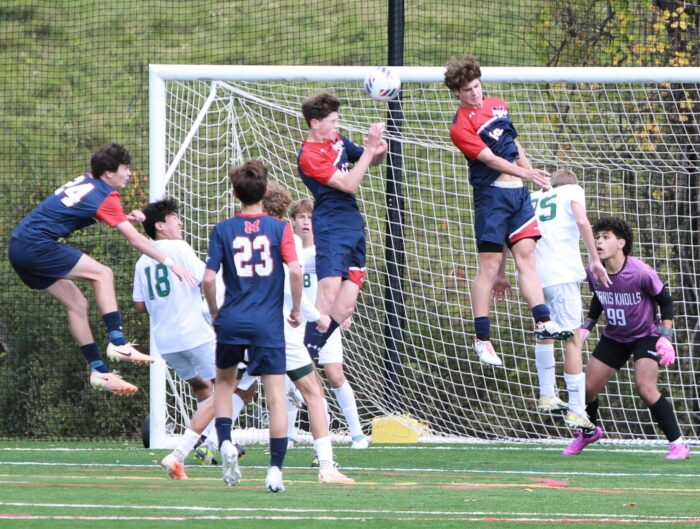Winter has arrived, bringing its usual challenges for coaches: How to maintain player engagement and fitness with reduced training frequency, space, and time? This dilemma is especially pronounced in regions where year-round outdoor training isn’t feasible, unlike in states like Florida, Arizona, or California.
Yet, winter is not just a season of challenges; it’s a time of unique opportunities. It’s a chance to innovate, to focus on different aspects of training that might be overlooked during busier seasons. In this article, we’ll explore practical strategies to transform these winter limitations into avenues for player growth and development, despite the constraints of the season.
The Role of Heart Rate Monitoring in Effective Training
How can you maximize player contact time in smaller areas during a season as lengthy as the Fall and Spring seasons? If this time isn’t utilized effectively, there’s a risk of under-preparing players and missing crucial development opportunities.
A key tool in assessing training effectiveness is heart rate monitoring. Tracking a player’s heart rate, especially periods when it exceeds 80% of their maximum heart rate, can provide valuable insights into the intensity and effectiveness of practice sessions. This data helps in understanding whether players are being physically challenged enough, particularly in environments where traditional training methods are limited.
A noticeable decrease in heart rate data during indoor sessions can be a red flag, indicating a need for more physically demanding activities. Introducing various constraints and challenges in training sessions can help in maintaining the intensity needed to keep players fit and engaged.
At Beyond Pulse, we provide coaches with session reports containing actionable data to help assess training effectiveness. Another key metric that is proprietary to Beyond Pulse technology is Active Participation (AP). In situations where contact time with players is limited, such as during the winter season, every moment counts. Maximizing AP means rethinking activities that lead to player idleness. Instead, focus on drills that engage more players simultaneously, like small-sided games or drills with active rest roles. Minimizing long coaching interventions and transitions can also help increase the active time players spend during training sessions.
Effective planning involves not just activity preparation but also considering your coaching behaviors, key points, and work-to-rest ratios. Tailoring these elements can enhance the player-centric learning experience. Winter’s limited training environment can affect players’ physical readiness, especially with fewer full-sized games and outdoor activities. It’s alarming to see heart rate data showing significantly reduced physical exertion in indoor sessions. Incorporating constraints and challenges in training can help maintain intensity, ensuring players remain fit and engaged.
Maintaining Fitness During Winter Training: 6 Key Principles
As we delve deeper into effective winter training strategies, it’s essential to highlight some fundamental principles for maintaining player fitness. These guidelines are crucial for achieving a balanced training routine that promotes both physical readiness and recovery.
1. Achieving Maximum Speed:
To maintain optimal fitness levels, it’s important to incorporate training that pushes players to reach their maximum speed. This should be done at least once every 7 days. By simulating the intensity of a real game, players can keep their speed and reaction times sharp.
2. Simulating Game Load:
Equally important is the need to experience a game-like load at least once per every 7 days. This approach ensures that players are not only maintaining their fitness but also staying accustomed to the demands of a full match.
3. Recovery and Load Management:
A critical aspect of training is allowing adequate time for recovery. Ideally, players should have 72 hours of less intense, non-game-like activities post a high-intensity session. This period allows the body to recuperate while still staying active. During this time, training can continue, but it should avoid the intensity and load of game-like conditions.
4. High-Speed Meters:
In addition to maximum speed, achieving a game-equivalent distance in high-speed meters once every 7 days is vital. This metric ensures that players are not only fast but also capable of sustaining their speed over distances comparable to what they would cover in a match.
5. Consistency and Incremental Increases:
When managing training loads, consistency is key. For those aiming to enhance their fitness, a gradual increase in load is recommended week by week. However, this increase should be moderate, not exceeding 1.5 times the previous load to prevent overtraining and injuries.
6. Personalization:
Lastly, it’s important to recognize that training needs vary from player to player. Factors such as individual fitness levels, overall wellbeing, and personal circumstances, especially during holiday seasons, play a significant role in determining the appropriate training intensity and volume. Tailoring training programs to suit these individual needs ensures that each player gets the most out of the winter training period.
Check out Active.com’s Winter Training Guide for ideas, tips, and tricks for session design in the winter season.
Conclusion
Winter training is not only about adapting to constraints but also about elevating coaching methods to meet these unique challenges. It’s a period that tests a coach’s ability to be innovative and effective despite limited resources.
Sharing, discussing, and celebrating your high heart rate session experiences with your team and other coaches can be beneficial. It fosters a community of learning and growth, enhancing coaching methodologies for the betterment of players.

 FRA
FRA































